Paul Whalen is a Partner at the world-renowned Robert A.M. Stern Architects (RAMSA). Whalen is a master at blending the best of 20th-century traditional co-ops with the convenience of 21st century modern lifestyles. CityRealty caught up with Whalen to talk about the firm's successful 20 East End Avenue, how architecture is like music, and why he swoons over traditional floor plans.
RAMSA's buildings always have a stately elegance that is firmly rooted in tradition. Why do you think that appeals to people?
I'm not sure that our aim is always to create stately elegance, but perhaps that is sometimes the result of working within the many varieties of classicism. Traditions are in essence the DNA of the best ideas that have withstood the test of time. And the reason these ideas survive is that they work well and appeal to a large number of people. With that kind of history behind architectural traditions, it's little wonder that they remain popular. We may be using iPhones and flying on jet airplanes these days, but what appeals to us as human beings hasn’t changed that much in the last couple of hundred years; it's only been a few generations after all. So the classic proportions of a square room or a room that has a 1:2 ratio are naturally appealing in their simplicity and in their sense of order.
Architecture has been referred to as frozen music. The comparison is apt because, just as in a great piece of music, in architecture there are themes that are repeated in different ways; there is often a narrative; and the proportional system is best when it incorporates all aspects of the building, in the way that most traditional music works within a tonal system.
Stately implies a formality that we may wish to use on some of our projects, but not on all of them. Elegance, on the other hand, is about timeless appeal and simplicity. Particularly in a residence, most people don’t want to be challenged. People may want to be challenged in a restaurant or a bar or a store, but when they get home to their primary residence they're looking for an oasis from the cacophony of life outside.
In this article:
What are your general feelings about open versus traditional floor plans?
They are both viable from an architectural point of view if done well, but they each follow different rules, like French and English. I personally like more traditional plans because I like clearly defined rooms that allow for different worlds to coexist within the boundaries of one apartment or house. If more than one person lives in an apartment, defined rooms give more options for private time, and they offer the possibility of separating noisy activities from quiet ones. At the same time, I like to be able to throw open doors and connect rooms if I like, giving me longer vistas and a way of seeing the different worlds at once.
Frankly, I'm also a bit of a romantic, so I’m drawn to the great room-making traditions of the classic New York apartment buildings such as 740 Park.
20 East End Avenue's floor plans are traditional but they have a modern feel with their light and flow. How did you achieve that?
Although many think of our firm as one that designs traditional New York apartment buildings, there are large differences between what we do and what someone such as Candela might have done in the 1920’s. First, our windows are much bigger, so there is more light no matter what type of floor plans are developed inside. Then the designs we use for baseboards and ceiling trim may have roots in tradition but they are much more abstracted and less fussy than historic detailing in New York apartment buildings. We like to provide cased openings between entertaining rooms that can be fitted out with swinging doors or pocket doors. This strategy makes for a clearer and bolder connection between rooms, while still maintaining the flexibility for privacy if desired.
We sometimes take a page from traditional French planning. They used enfilades, the alignment of multiple doorways along an axis; importantly, these enfilades were typically located near the windows of an outside wall, allowing for expansive diagonal views from one room through to the windows of the next room, doubling the amount of light and view. So where possible I like to locate connecting doors close to an outside wall. Finally, many of our new buildings have ceiling heights that are as tall or taller than prewar buildings, adding to the sense of openness.
Do you think the pendulum has shifted back to traditional and away from the open plan?
It depends on what part of the country and the size of the apartment or condominium, if that is the kind of residence you are referring to. In tiny apartments, a more open plan makes sense so that various functions such as a living room, dining room, kitchen and even an entry hall can share the same space. There is a lot of personal preference as to how different living spaces should interact with each other in a larger apartment, but on the East Coast, we find there is a large market for more discrete rooms. In the West and Midwest, the preference is definitely for more open plans, often with the kitchen completely open to the living room. That kind of arrangement can be beautiful if the kitchen is carefully designed to look like a great piece of furniture. Personally, I prefer a separate kitchen even in a smaller apartment, so I don’t have to clean everything every time a friend comes over. I like the idea that an apartment can have some spaces that are more front of house and others that are more back of house, as they say in the hotel business.
But then when I design an apartment I don’t design it for myself—I do the best job I can designing it for a particular market. Sometimes in a less developed market an architect needs to get together with a developer and educate the local market to get them to understand that there are better ways to live than what they have been exposed to. That’s what separates a visionary developer from someone who just wants to reproduce the last successful building in their market.
Check out all RAMSA-designed condos in NYC below.
1. The Chatham, 181 East 65th Street
The Related Companies
| Built in 2000
34 Floors | 94 Units
Built 18 years ago, The Chatham, located in Lenox Hill, was Robert A.M. Stern's first residential condominium project and was inspired by the neighborhood's 1920s buildings. It features a brick and limestone facade punctuated by French balconies and bay windows. Architecture critic Carter Horsley describes it as, "The most elegant Post-Modern apartment tower along the redeveloped stretch of Third Avenue on the Upper East Side." The building offers a concierge, a full-time doorman, garage parking, bike room, and a residents-only Equinox spa and fitness center.
→ Featured Listing: #18C | 5 beds, 5 baths | $9.495M
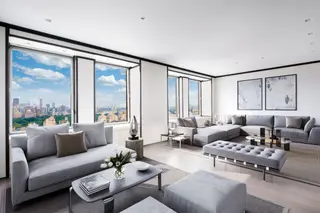 (Sotheby's International)
(Sotheby's International)
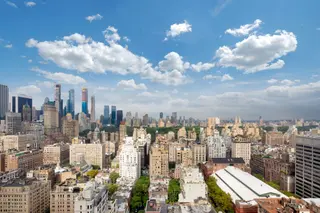 View towards Central Park
View towards Central Park
2. 15 Central Park West
Zeckendorf Development
| Built in 2008
43 Floors | 201 Units
The renowned 15 Central Park West is made up of two limestone towers that were built in a "faux-prewar style" in 2008, and it's still relevant today - it was recently named the top-selling building by our CityRealty 100 report (April 2017-March 2018) and according to Bloomberg, it's style is exactly what developers want Robert A.M. Stern to replicate with his newer buildings, like 20 East End and 250 West 81st Street. And it makes sense - 15 CPW has been setting sales records for years and numerous celebs, including Robert De Niro, Alex Rodriguez, and most recently, Sting, who sold his penthouse there for $50M late last year, have all called it home at some point.
It features 202 apartments ranging from one- to four-bedroom homes and amenities that include a restaurant with in-home private dining service, a 14,000-square-foot fitness center with a 75-foot sky-lit lap pool, wine rooms, a private screening room, a game room, a full staff, and more.
→ Featured Listing: #12M | 3 beds, 3.5 baths | $18.9M (-9.6%)
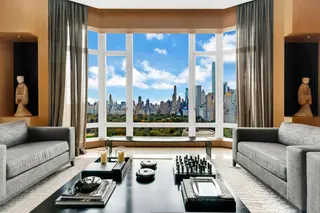 (Compass)
(Compass)
3. The Brompton, 205 East 85th Street
The Related Companies
| Built in 2009
23 Floors | 166 Units
Completed in 2009, The Brompton is an LEED-Certified Silver red-brick condominium that Carter Horsley says looks like an "impressive and very solid transplant from England" with its cast stone window bays, piers, and finials. The main entrance is townhouse-scaled and amenities include a full-time doorman, resident's lounge, patio, children's playroom, two landscaped courtyards, and a cardio fitness room as well as an Equinox within the building. Apartment layouts range from a 550-square-foot studio to a five-bedroom measuring just over 4,500 square feet.
→ Featured Listing: #20C | 2 beds, 2.5 baths | $2.599M (-12.6%)
4. The Harrison, 205 West 76th Street
The Related Companies
| Built in 2009
19 Floors | 132 Units
The Harrison is a LEED Silver building with 132 condominiums ranging from studios to five bedrooms. This distinguished, mid-block building is a wonderful example of contextual architecture comprised of two mid-rise buildings that complement its neighbors rather than one disruptive very tall building. The two towers rise to 13 floors and 19 floors, and are connected by a large residential lobby. The design features pale orange façades, slanting ground-floor columns, angled ends, large windows, a grand entrance with arched windows, a fireplace and a large entrance marquee that is emblazoned on its edge with the building’s name.
The building has concierge and a doorman, an entertainment lounge with a landscaped outdoor courtyard, a "dinosaur-themed children's playroom" (in honor, no doubt, of the large bones nearby at the American Museum of Natural History), a rooftop sun terrace, a garage, a health club and an event room.
→ Featured Listing: #7F | 2 beds, 3 baths | $3.9M
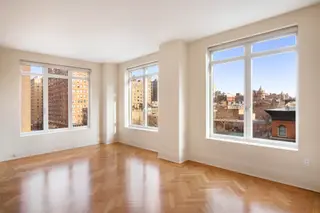 (Compass)
(Compass)
5. Superior Ink, 400 West 12th Street
The Related Companies
| Built in 2010
17 Floors | 62 Units
Superior Ink in the West Village consists of a tower development and adjacent townhouse units. The LEED-certified development, which is just across the street from Hudson River Park, was finished in fall 2010. The building was fashioned by Robert A.M. Stern with a nod to early 20th-century industrial construction and features a facade with light orange brick and over-sized arched windows.
Celeb buyers include actress Hilary Swank and fashion designer Marc Jacobs. The many amenities at Superior Ink include a doorman, concierge, garage, gym, yoga room, screening room, resident’s lounge, and a children’s playroom.
→ Featured Listing: #4EF | 2 beds, 3.5 baths | $25,000/month
Would you like to tour any of these properties?
Just complete the info below.
Or call us at (212) 755-5544
6. 18 Gramercy Park South
Zeckendorf Development
| Built in 1927, Converted in 2012
18 Floors | 16 Units
Built in 1927, the former hotel and Salvation Army Property at 18 Gramercy Park South was converted by the Zeckendorfs in 2012, with Robert A.M. Stern as the architect. All units in the building come with the most coveted of Gramercy amenities, a key to Gramercy Park. Amenities include a concierge, a fitness center, and key-locked elevator access.
The 16 condos in 18 Gramercy Park South are largely full-floor units, with the exception of a duplex penthouse, which Leslie Alexander, owner of the Houston Rockets, bought for $42 million in 2012. At the time, the apartment was the most expensive ever sold south of 57th Street.
→ No Listings Available, See Past Sales
7. The Four Seasons Private Residences, 30 Park Place
Silverstein Properties
| Built in 2016
82 Floors | 157 Units
Soaring 926 feet above the streets of lower Manhattan, 30 Park Place is the tallest finished building by Robert A.M. Stern Architects. Situated behind the beautiful Woolworth Building and near the World Trade Center, the 82-story development was developed by Silverstein Properties with the California State Teachers Retirement System (CalSTRS) and finished in 2016.
The retro-chic building's first 24 floors house a Four Seasons Hotel whose 5-star services are extended to the residents of its 157 condos. The homes come in a mix of one- to six-bedrooms and offer stunning views of the city. Residents can enjoy nearly 40,000 square feet of amenities, that include a concierge and a doorman, a gym with a pool, a media room, and a children’s playroom. Residents also have exclusive access to the restaurant CUT NYC, Wolfgang Puck's first and only New York flagship.
→ Featured Listing: #42B | 2 beds, 2.5 baths | $4.9M
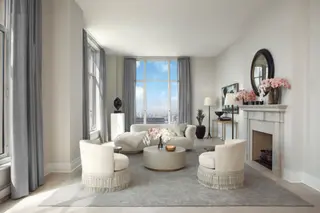 Corcoran
Corcoran
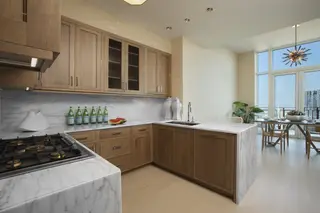
8. 20 East End Avenue
Corigin Real Estate Group
| Built in 2017
17 Floors | 41 Units
The highly successful and attractive 20 East End Avenue recalls the style of NYC's residential buildings of the 1920s and 1930s with its Juliet balconies, setback terraces, bay windows, and Cunningham grey brick facade. It is comprised of 41 two- to six-bedroom residences that include two duplex homes, a maisonette, and two penthouses. It's generously-sized, pre-war-style apartments feature 11' to 14' ceiling heights, Appalachian oak flooring, custom casings, and base and crown moldings.
Three floors of amenities offer residents a library, billiard room, wine cellar, wine-tasting room, 3,000-square-foot gym, spa, and more. Closings at the luxury building began in late 2016.
→ Featured Listing: #M | 5 beds, 5 baths | $10.895M
9. 70 Vestry Street
The Related Companies
| Expected Completion: 2018
14 Floors | 46 Units
70 Vestry is a 14-floor condominium anchoring TriBeCa's Hudson River waterfront. The building is faced in a dapper skin of Beaumaniere limestone accented with industrial detailing.
Counting Tom Brady and Gisele Bundchen among its purchasers, the building's first closings came in earlier this summer at an average price/ft2 of $3,471 and an average sales price of $9.6M. The homes are designed in collaboration with AD100 designer Daniel Romualdez and have just three residences per elevator landing. Many homes also have a dedicated service entry and private terraces.
Aside from its enviable waterfront location, other bells and whistles include a gated porte-cochere, automated parking garage, a library, a children’s playroom, a pet spa, and a wellness center.
→ Featured Listing: #4F | 3 beds, 3 baths | $8.495M
10. 520 Park Avenue
Zeckendorf Development
| Expected Completion: 2018
54 Floors | 34 Units
Clad in Indiana limestone, 520 Park Avenue is a very elegant, 54-story, mid-block tower between Park and Madison avenues that is 779 feet 6 ½ inches feet high and contains 34 luxury condominium apartments. There are 29 floor-through simplexes, four duplexes, and one triplex. This is the Upper East Side’s answer to the Upper West Side's 15 Central Park West, though this is one block further away from Central Park but taller and with significantly fewer apartments: another stunning winner from architect Robert A. M. Stern and Zeckendorf.
The building has a doorman, a concierge, a 25-foot-high lobby with coffered ceilings and two limestone fireplaces, a two-story, 8,000-square-foot health club with a swimming pool with coffered ceilings and trellised walls, bicycle storage, wine storage, resident storage, a library. Current listings have an average price of $5,641 per square foot.
→ Featured Listing: #19 | 4 beds, 5.5 baths | $20.5M
11. 220 Central Park South
Vornado Realty Trust
| Expected Completion: 2018
70 Floors | 118 Units
Construction began on the anticipated and super secret 220 Central Park South back in 2015 and it is now nearing completion. It is comprised of an 18-story building called "The Villa" and a 70-story (950 feet) "Tower" behind it. Both are of Alabama limestone and feature Juliet balconies, setback terraces, and ornamental metalwork.
The apartments aren't publicly listed but are uber pricey. Last year, The Real Deal reported that an eighth-floor duplex in the Villa was asking $80M - and even that was much less compared to Vornado's officially-listed 23,000-square-foot quadplex asking $250 million, which would shatter the NYC record set by a penthouse at Extell’s One57, which sold for $100.5 million.
Amenities will include a fitness center, weight room, juice bar, swimming pool, squash court, basketball court, golf simulator, and more.
→ No Available Listings, See Building Profile
12. Two Fifty West 81st, 250 West 81st Street
Alchemy Properties | Expected Completion: 2019
18 Floors | 31 Units
Located at the corner of Broadway and 81st Street in the Upper West Side, 250 West 81st Street boasts "timeless architecture" through its pre-war inspired details that include a limestone and marble grey brick facade punctuated by setbacks and decorative window openings. Residences range from two- to five-bedroom layouts and offer tall ceiling heights, oversized windows, oak herringbone flooring, and kitchens by Robert A.M. Stern Architects and Smallbone of Devizes. Carefully-considered window placements ensure perfect views of the Manhattan skyline.
The extensive amenity package focuses on wellness and socializing with a multi-purpose sports court with a basketball hoop, an imagination forest in the children’s playroom, a fitness center featuring Technogym and Peloton cardio, a golf simulator room, a rooftop sky terrace with an outdoor grill and views of Midtown and the Hudson River, the music recording and practice studio including a recording booth, and a library lounge.
→ Featured Listing: #5C | 3 beds, 3 baths | $5.15M
Mapping All RAMSA-designed Residential Buildings in NYC:
Would you like to tour any of these properties?
Just complete the info below.
Or call us at (212) 755-5544
Would you like to tour any of these properties?

Contributing Writer
Michelle Sinclair Colman
Michelle writes children's books and also writes articles about architecture, design and real estate. Those two passions came together in Michelle's first children's book, "Urban Babies Wear Black." Michelle has a Master's degree in Sociology from the University of Minnesota and a Master's degree in the Cities Program from the London School of Economics.

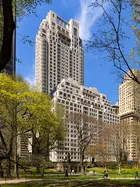
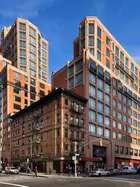
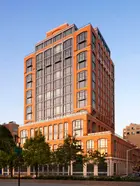
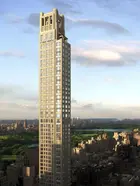
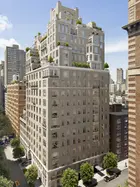
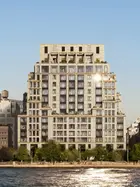
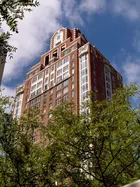
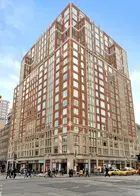
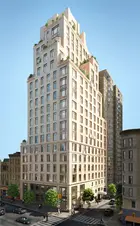
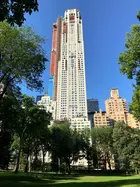
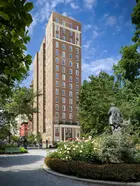
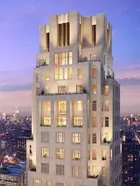
 6sqft delivers the latest on real estate, architecture, and design, straight from New York City.
6sqft delivers the latest on real estate, architecture, and design, straight from New York City.
